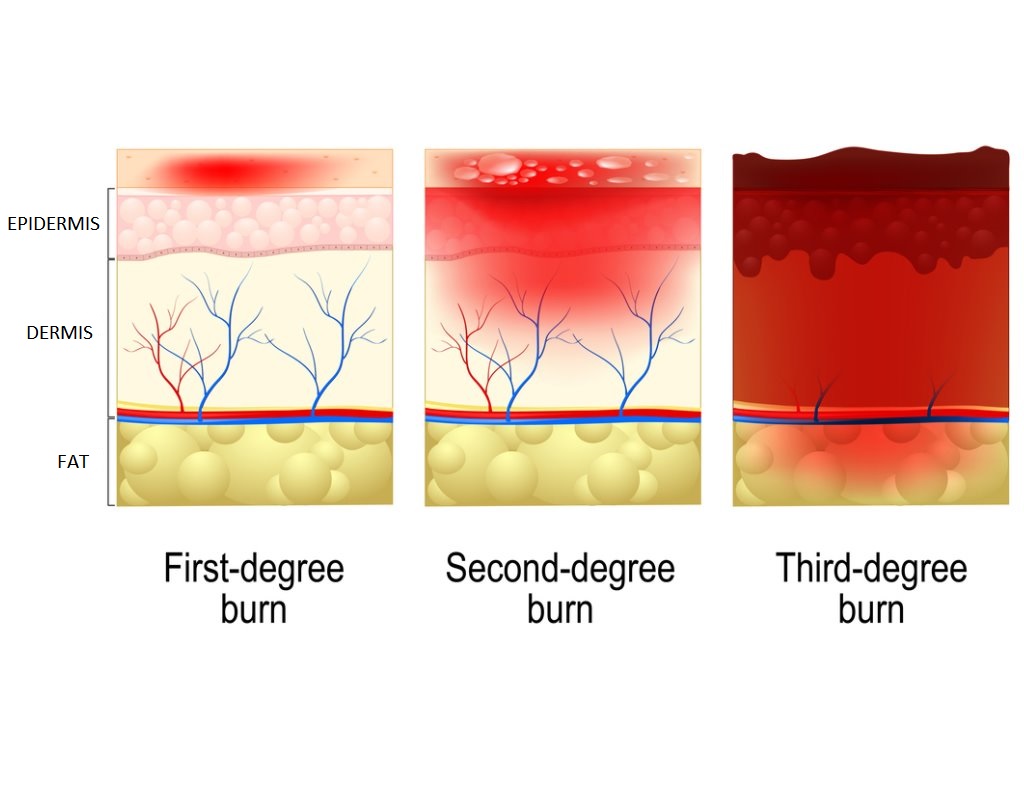

Sponsored Ads

Sponsored Ads

A Comprehensive Guide to Burn Injuries
Burn injuries can be extremely painful and emotionally traumatic.
Although many burn sufferers believe they are fighting alone, this is not the reality. If you or a loved one experienced a minor burn injury or major burn damage as a result of willful wrongdoing or gross carelessness, you might be entitled to substantial monetary compensation.
General Overview of Burn Accident Injuries
First-Degree Burns
Only the epidermal layer of the skin is impacted by first-degree burns. The most frequent instance of this is when someone touches something hot. First-degree burns do not involve the dermis, so although the skin becomes red, it heals rapidly and without blisters.Second-Degree Burns
The epidermis, the top layer of skin, and the dermis, a deeper layer, are both affected by second-degree burns. Typically, it causes the skin to blister. Frequently, hot metal, hot oil, and scorching liquids will result in severe second-degree burns. However, sunburn is also considered a second-degree burn.Third-Degree Burns
Third-degree burns can be fatal because they damage all layers of skin and nerve endings. Because the skin's protective layer is destroyed in third-degree burns, the skin may appear white or burned. Additionally, they could harm the underlying muscles and other structures. A third-degree burn also takes a long time to recover from.Fourth-Degree Burns
The skin and various tissues beneath it are damaged by a burn injury of the fourth degree. More severe than third-degree burns are these burns. They are frequently brought on by electrocution or substances like lye or gasoline. Fourth-degree burn damage may result in serious disease or death since the body may absorb these toxins quickly.Types of Burn Injuries
Chemical Burns
Chemical burns are brought on by exposure to dangerous chemicals, which are frequently linked to occupational mishaps. Acid burn brought on by coming into contact with a potent acid, alkali burn brought on by coming into contact with a potent base, and scalding burn from hot liquids or vapors are just a few examples. The skin's subcutaneous tissue is destroyed by this burn.
Electrical Burns
When the body is electrically charged in an electrical mishap, electrical burns are the result. Injury may also result from the spark that starts combustible materials on fire.Radiation Burns
The ultraviolet rays of the sun, X-rays, and other radiation sources can result in radiation burns. Additionally, prolonged exposure to sunlight results in sunburns, which are reddening of the skin.Scalding
Contact with hot liquids or steam can induce scalding. Due to the fact that youngsters are more prone to this kind of injury, it can be extremely dangerous. Scald wounds can be minor (first-degree) or serious (fourth-degree).Final Thoughts
A burn injury can have some serious consequences. The actions you take following the injury will determine the compensation you get. It is important to contact a personal injury attorney to get you compensated for the injury. An experienced lawyer can help you negotiate with insurance companies and will get you the best possible compensation for your injuries. It is important to file a lawsuit even for first-degree burns because negligence should never go unpunished.
Sponsored Ads

Sponsored Ads

